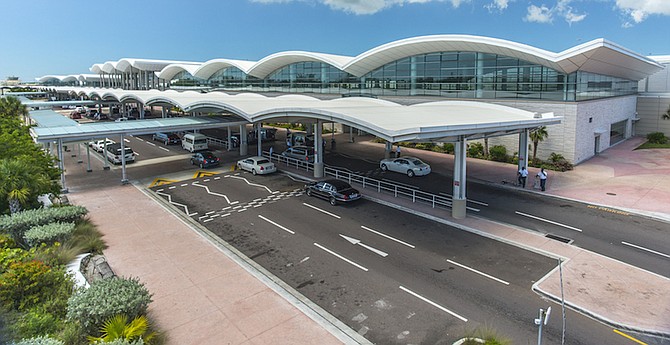By NEIL HARTNELL
Tribune Business Editor
nhartnell@tribunemedia.net
Air arrivals to The Bahamas in July rebounded to over three-quarters of their pre-COVID levels, the Central Bank revealed yesterday, while the drop-off in vacation rental demand eased in August.
The regulator, unveiling its monthly economic developments report for August, said: “Preliminary evidence suggests that monthly tourism output maintained signs of a slow recovery, albeit continuing to face headwinds, owing to the ongoing globally imposed travel restrictions related to the COVID-19 pandemic.
“Nonetheless, domestic demand continued to provide support to the vacation rental market. Initial data from the Ministry of Tourism indicated that total visitor arrivals by first port of entry expanded to 183,270 in July from just 23,820 in the corresponding period of 2020, as international borders were reopened, although with imposed restrictions.
“Leading this outcome, air arrivals strengthened to 133,811 from 15,355 in the previous year, representing 76 percent of the arrivals recorded in 2019. In addition, sea traffic increased to 49,459, compared to a mere 8,465 in the preceding year, as the uptick in cruise bookings persisted and more ships and ports resume activity.”
The Central Bank continued: “Disaggregated by major market, total arrivals to New Providence rose to 118,797 from 7,899 in the same period of 2020. Contributing to this outturn, the air and sea segments measured 101,524 and 17,273, respectively.
“Similarly, foreign arrivals to Grand Bahama increased to 11,638, extending the volume of 1,854 registered a year earlier, as sea and air arrivals amounted to 8,689 and 2,949, respectively. Further, total traffic to the Family Islands grew to 52,835 from 14,067 in the prior year, attributed to respective improvements in the air and sea segments, of 29,338 and 23,497.”
Turning to the first eight months of 2021, the Central Bank added: “On a year-to-date basis, total arrivals reduced by 65.5 percent, surpassing the 61.8 percent decrease registered a year earlier, which had included healthy first quarter activity.
“Notable cruise business was more materially absent, with a 92.3 percent reduction in sea traffic, exceeding the 59.6 percent contraction in 2020. In contrast, air arrivals recovered by 34.6 percent, opposing the 68.4 percent fall-off recorded in the previous year, as all major markets registered positive movements during the review period.”
As for the vacation rental market, the banking regulator said: “In the vacation rental market, the latest data from AirDNA showed that the decrease in demand for short-term rentals moderated during the month of August. Specifically, the reduction in total room nights sold slowed to 27.8 percent, compared to 47.7 percent in the corresponding period of the preceding year.”
This saw “declines in bookings for both hotel comparable and entire place listings easing to 20.1 percent and 28.6 percent, respectively, from 38.2 percent and 48.8 percent a year earlier.
“Price indicators improved year-over-year, as the average daily room rate (ADR) increased for hotel comparable and entire place listings, by 23.2 percent and by 18.7 percent, to $174.78 and $484.42, respectively,” the Central Bank said.
“On a year-to-date basis, total room nights sold firmed by 38.8 percent, reflecting respective gains in bookings for entire place and hotel comparable listings to 41 percent and 21.7 percent. Meanwhile, pricing data revealed that the ADR grew for both entire place and hotel comparable listings, by 16.1 percent and by 11.4 percent, to $478.25 and $170.29, respectively.”
Shifting to the data provided by the Nassau Airport Development Company (NAD) on departures from Lynden Pindling International Airport (LPIA), the Central Bank said total departures - net of domestic passengers - rose to 101,530 in August compared to a modest 2,139 in the same month of 2020, reflecting the economy and border re-opening.
“In particular, US departures advanced to 94,166 from just 1,074 in the prior year, while non-US departures increased to 7,364 from a mere 1,065 in the preceding year. On a year-to-date basis, outward bound traffic recovered by 24 percent following a decline of 68.5 percent last year,” the Central Bank said.
“In particular, US departures grew by 41.1 percent after a 69.7 percent fall-off in the previous year. In contrast, the reduction in non-US departures extended to 63.4 percent from 60.8 percent in the prior year.”





Comments
Use the comment form below to begin a discussion about this content.
Sign in to comment
Or login with:
OpenID